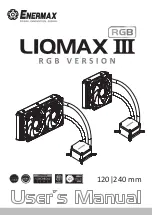
• FIFO buffer underrun/overrun error—If the FIFO buffer is full and software tries to write data to the
FIFO buffer, an overrun error is set. Conversely, if the FIFO buffer is empty and the software tries to read
data from the FIFO buffer, an underrun error is set. Before reading or writing data in the FIFO buffer,
the software must read the FIFO buffer empty bit (
fifo_empty
) or FIFO buffer full bit (
fifo_full
)
in the
status
register.
†
• Data starvation by host timeout—This condition occurs when software does not service the FIFO buffer
fast enough to keep up with the controller. Under this condition and when a read transfer is in process,
the software must read data from the FIFO buffer, which creates space for further data reception. When
a transmit operation is in process, the software must write data to fill the FIFO buffer so that the controller
can write the data to the card.
†
• CE-ATA errors
†
• CRC error on command—If a CRC error is detected for a command, the CE-ATA card device does not
send a response, and a response timeout is expected from the controller. The ATA layer is notified that
an MMC transport layer error occurred.
• CRC error on command—If a CRC error is detected for a command, the CE-ATA card device does not
send a response, and a response timeout is expected from the controller. The ATA layer is notified that
an MMC transport layer error occurred.
†
• Write operation—Any MMC transport layer error known to the card device causes an outstanding ATA
command to be terminated. The ERR bits are set in the ATA status registers and the appropriate error
code is sent to the Error Register (Error) on the ATA card device.
†
If the device interrupt bit of the CE-ATA card (the nIEN bit in the ATA control register) is set to 0, the
CCS is sent to the host.
†
If the device interrupt bit is set to 1, the card device completes the entire data unit count if the host
controller does not abort the ongoing transfer.
†
During a multiple-block data transfer, if a negative CRC status is received from the card device,
the data path signals a data CRC error to the BIU by setting the
dcrc
bit in the
rintsts
register
to 1. It then continues further data transmission until all the bytes are transmitted.
†
Note:
• Read operation—If MMC transport layer errors are detected by the host controller, the host completes
the ATA command with an error status. The host controller can issue a CCSD command followed by a
STOP_TRANSMISSION (CMD12) command to abort the read transfer. The host can also transfer the
entire data unit count bytes without aborting the data transfer.
†
Booting Operation for eMMC and MMC
This section describes how to set up the controller for eMMC and MMC boot operation.
Boot Operation by Holding Down the CMD Line
The controller can boot from MMC4.3, MMC4.4, and MMC4.41 cards by holding down the CMD line.
For information about this boot method, refer to the following specifications, available on the JEDEC website:
• JEDEC Standard No. 84-A441
• JEDEC Standard No. 84-A44
• JEDEC Standard No. JESD84-A43
Related Information
For more information about this boot method, refer to the following JEDEC Standards available on the
JEDEC website: No. 84-A441, No. 84-A44, and No. JESD84-A43.
Altera Corporation
SD/MMC Controller
11-61
Booting Operation for eMMC and MMC
cv_54011
2013.12.30
















































